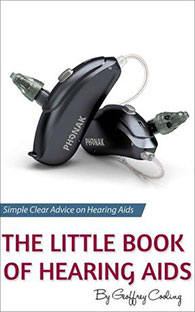Bone Anchored Hearing Aids (BAHA)
Specialist Bone Conduction Hearing Solutions
What Are Bone Anchored Hearing Aids
A Bone Anchored Hearing Aid (BAHA) is a type of hearing aid which uses bone conduction of sound to deliver better hearing. BAHAs are primarily used for people who have conductive hearing losses and people with single-sided deafness (unilateral hearing loss). Sometimes, they are used for people who cannot wear traditional types of hearing aids because of chronic infection, malformed ear canals or ears or absent ears. They are more expensive than traditional hearing aids, and their placement involves invasive surgery. As with any surgery, there is a risk of complications, although generally, any complications are usually minor.
How BAHA hearing aids work
BAHA hearing aids use a surgically implanted abutment to transmit sound by direct conduction through the skull bone (bone-conduction) to the inner ear. In doing so, the sound bypasses the external auditory canal (ear canal) and middle ear. Traditionally, a titanium prosthesis is surgically embedded into the skull with a small abutment exposed outside the skin. Although, this has changed in some cases in recent years with the introduction of subcutaneous (under the skin) magnetic plates. The magnetic plate is screwed into the skull and the surgical site is closed. There is no visible abutment with this type of setup.
A BAHA sound processor is attached to the abuttment or the magnetic plate and transmits sound vibrations through it. The implant or magnetic plate in turn vibrates the skull and inner ear, which stimulate the nerve fibers of the inner ear. By bypassing the underlying problem in the outer or middle ear, Bone Anchored Hearing Aids increase a person's ability to hear and localise sounds. The use of a BAHA system also leaves the ear canal open which can help to reduce any problems caused by chronic ear infections if that is the reason for implantation. In patients with single-sided sensorineural deafness, the BAHA device stimulates the good cochlea by sending the sound signal through the skull bone from the deaf side to the inner ear of the hearing side. This transfer of sound gives a 360° sound awareness.
In a traditional BAHA device setup, the sound processor (hearing aid of sorts) sits on the abutment and transmits sound vibrations to the titanium implant. The implant vibrates the skull and inner ear, which stimulate the nerve fibres of the inner ear, allowing better hearing. In the case of the magnetic plate, the sound processor is attached to the side of the head magnetically but works in much the same manner.
Who is BAHA Suitable For
BAHA hearing aids are most suitable for the following people:
-
Someone With chronic ear disease: Chronic ear disease is in fact relatively common and is associated with continuous or intermittent drainage from the ear canal. People with this problem often have an associated hearing loss and need amplification. A conventional hearing aid with an ear mould is probably not the right solution here because of the drainage. In fact, closing off the ear canal with an ear mould may cause ear infections which will increase drainage.A bone conduction hearing device will completely bypass the middle ear problem and leave the ear canal open.
-
Someone with single-sided deafness: A person with unilateral hearing loss may have difficulty hearing even when the other ear is normal. The problems are particularly evident in demanding situations such as noisy environments or when several people are speaking the same time. A BAHA placed on the side with no hearing will allow situational awareness and access to sounds from that side. More often than not though, people with single-sided hearing loss may choose to use a CROS (Contra-Lateral Routing of Signal) hearing aid system.
-
Someone with external ear canal problems: Irritation in the external ear canal due to inflammation, psoriasis, or eczema may mean that a traditional hearing aid is not appropriate. A BAHA or other direct bone conduction hearing aid could be an option.
-
Someone with malformations of, or absent ear structures: People with malformations such as atresia (Absence of the outer ear and, or, ear canal) or microtia (Malformation of the outer and, or, middle ear) are not always suitable for reconstructive surgery. For instance, people with Treacher Collins syndrome (A genetic disorder characterized by deformities of the ears, eyes, cheekbones, and chin) may have significant malformations with ossicular defects and an abnormal route of the facial nerve. In essence, the surgery could do more damage than good. Patients with Down syndrome may also have a narrow ear canal and middle ear malformation leading to impaired hearing.
If You Find The Information on This Page Helpful, Please Rate The Page
Your Ratings allow us to understand if the info we provide is helpful
Rate this article
(Rated 4 stars by 343 people)





How is BAHA Surgery Performed?
The surgery can be performed under local or general anaesthesia and can be an outpatient procedure. A small incision in the scalp is made, the bone behind the ear is exposed through a U-shaped or straight incision. A hole, 3 or 4 mm deep depending on the thickness of the bone, is drilled. The hole is widened and the implant with the mounted coupling is inserted. The incision is then closed around the abutment. In the case of the magnetic plate, the same procedure is followed but the incision is closed up.
Some surgeons perform a reduction of the subcutaneous soft tissue. However, reduction of the soft tissue has been questioned and some surgeons do not perform any or the very minimum of it. Three to six weeks later, the audiologist will fit and adjust the hearing processor according to the patient's hearing level.
Completely Reversible
The placement of the abutment is completely reversible, so if for some reason the BAHA proves unsatisfactory or is rejected, the abutment can be removed simply.
Possible Side effects of BAHA Surgery
While there may be complications of BAHA systems, they are more often than not mild rather than severe. The complications can be classified as related to the bone (hard tissue) or the soft tissue. The following are possible if unlikely complications.
-
Failure of osseointegration (implant does not integrate with skull bone)
-
Chronic infection
-
Trauma
-
Irritation of the skin surrounding the implant
-
Skin flap necrosis (death of the skin flap)
-
Overgrowth of skin over the device
-
Wound dehiscence (splitting apart of the wound)
-
Bleeding or hematoma formation
-
Persistent pain
Hard tissue or bone complications appear to be rare and soft-tissue complications are much more common. Most of them are managed with topical treatments. It appears that children are more likely to suffer both kinds of complications than adults. Complications are less likely with good wound hygiene.
Bone Anchored Hearing Aid Manufacturers
Currently, there are three manufacturers with FDA-approved bone-anchored hearing devices: Oticon Medical, Cochlear and Sophono (Medtronic). The devices fit differently for children and adults, with a soft band option available for children.
There are four suppliers of Bone Conducting Hearing Implants in the UK: Cochlear Europe, MED-EL (Tab "Hearing Solutions"), Sophono (Medtronic) and Oticon Medical
Oticon Medical
![]() Oticon Medical is a member of one of the world’s largest groups of hearing healthcare companies, William Demant. They share a close link with Oticon (Demant's main hearing aid brand) and they have direct access to the latest advancements in hearing research and technologies from Oticon.
Oticon Medical is a member of one of the world’s largest groups of hearing healthcare companies, William Demant. They share a close link with Oticon (Demant's main hearing aid brand) and they have direct access to the latest advancements in hearing research and technologies from Oticon.
Oticon Medical BAHA systems are called Ponto and the processors are wireless enabled allowing connection to the Oticon Connect Line portfolio of accessories. The Ponto system is affixed to a traditional type of abutment.
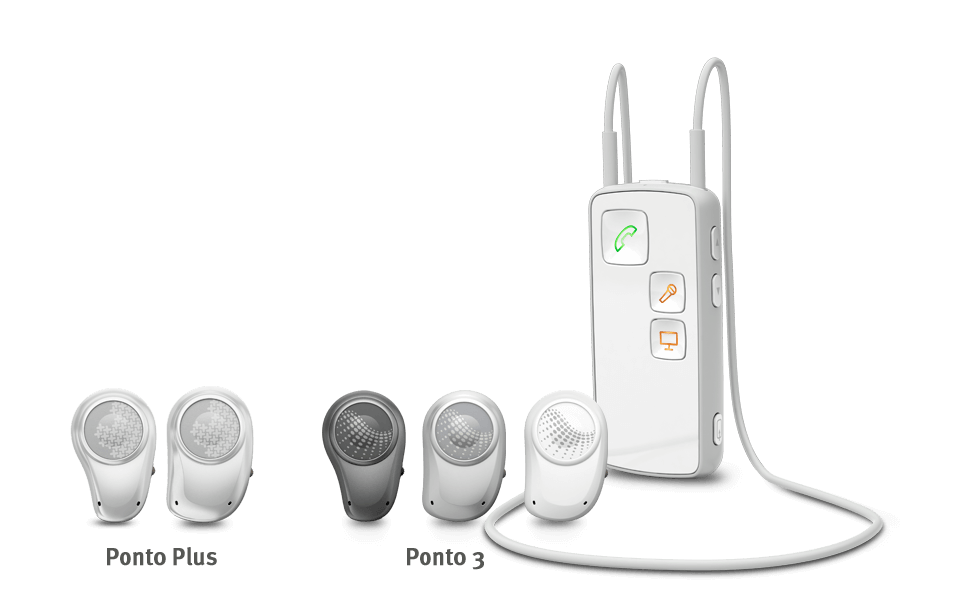
Ponto 4
Oticon are introducing a brand new Bone Anchored Hearing System which they call Ponto 4. The new Ponto 4 uses the Velox S chipset which powers their Opn S hearing aids. That means that the Ponto 4 should be both Bluetooth enabled with direct connection to iPhones and internet connected with the Oticon On app. The Ponto 4 will also use the OpenSound Navigator from Oticon that has become famous on the Opn and Opn S. It offers a completely new type of directionality which allows users a more natural, nuanced sound experience.
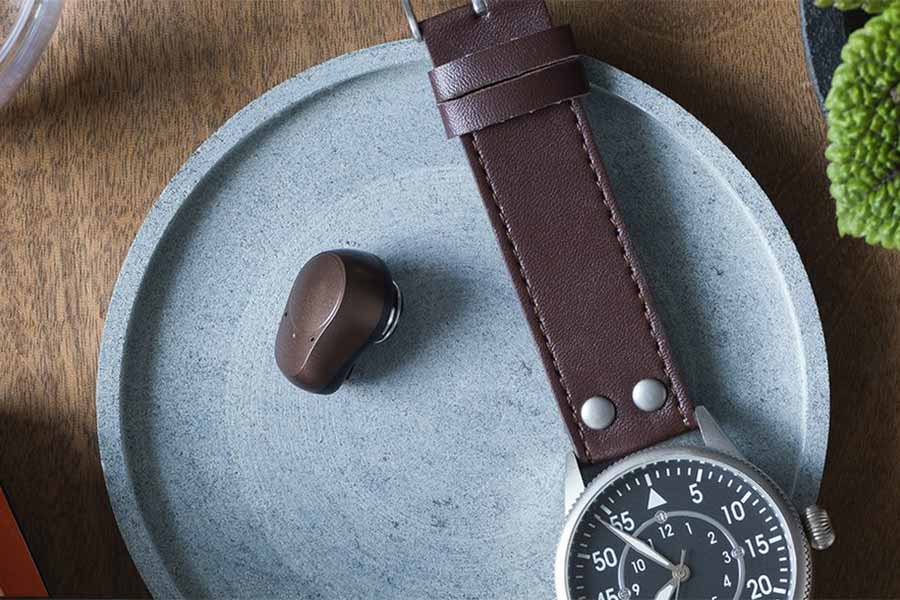
Cochlear
Cochlear is a global manufacturer of BAHA devices, they are probably more famous for their Cochlear Implants and they dominate the world market for those products. They have over thirty years of experience and their current BAHA devices are the BAHA Connect system (First image below) which is fitted with a traditional abutment and the BAHA Attract system (second image below) which is fitted with a subcutaneous magnetic plate system.
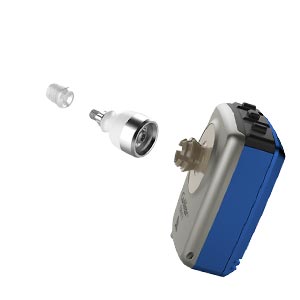
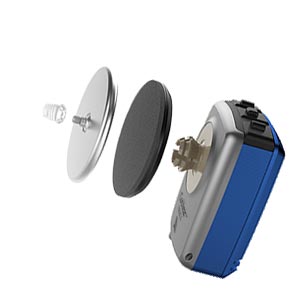
An Instant Fit Bone Anchored Hearing Aid
Cochlear announced the introduction in January 2018 of a new device which is a non-surgical bone conduction wearing option for children with conductive or mixed hearing loss, or single-sided deafness (SSD), who are not yet eligible or ready for an implant. The new device offers real help to children that just aren't ready to face the surgery involved for a more permanent solution.
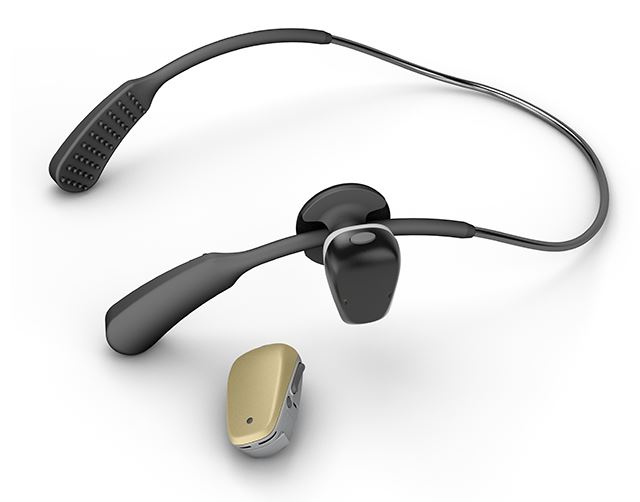
The device opens up the possibility of understanding the benefits that a bone anchored hearing aid will deliver without having to undergo surgery.
Find An Independent Hearing Aid Centre in Your Area
Arrange a consultation with a trusted Independent hearing healthcare professional in your area


